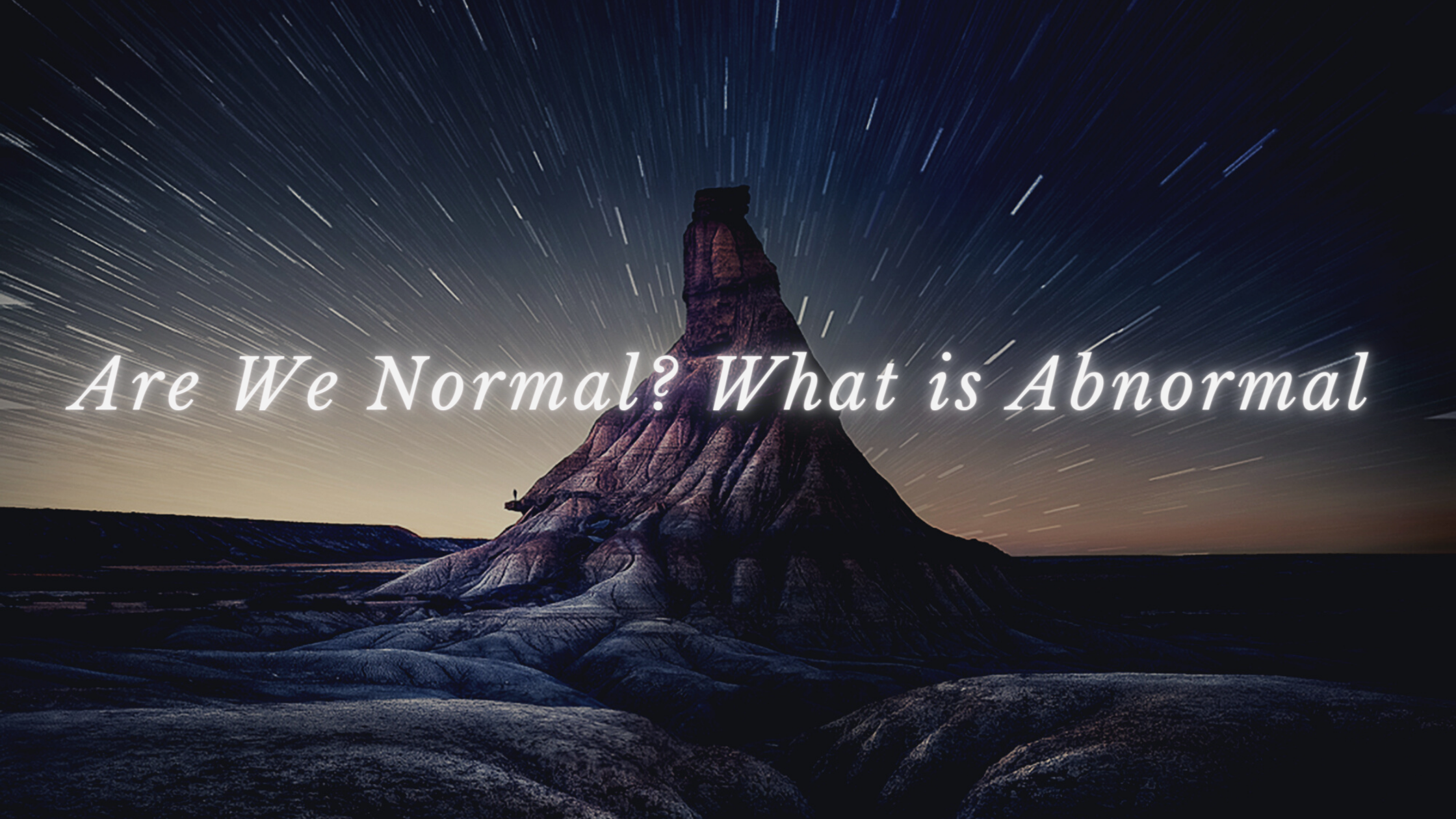Have you ever felt feelings of sadness or anger or numbness that is so overpowering that sometimes it makes you feel utterly alone because there was this overpowering sense that nobody else understood? And then you SNAP AND LOSE CONTROL?
More often than not, our ability to cope with life can sometimes be affected when bad things happen. But does that mean that WE HAVE GONE CRAZY AND HAVE BECOME ABNORMAL?
Let’s talk about Abnormal Psychology.
Abnormal psychology is a division of psychology that studies people who are “abnormal” or “atypical” compared to the members of a given society. The definition of the word abnormal is simple enough but applying this to psychology poses a complex problem: what is normal? Whose norm? For what age? For what culture?
Although everyone faces stress in their lives and stress is a normal part of everyday life. So we’re ‘normal’ to face these stresses and most time, we can cope with these stresses. However, when stress and anxiety escalate without a means to cope with the stress, they often are linked to many troublesome psychological and physiological conditions and may lead to abnormal functioning and then to even developing mental disorders. Mental disorders are usually associated with significant distress or disability in key areas of functioning such as social, occupational, or other activities.
How do we differentiate and understand people who are considered ‘abnormal’?
It is important to note that the distinctions between normal and abnormal are not synonymous with good or bad. When we think about abnormal psychology, we should focus instead on the level of distress or disruption that a troubling behaviour might cause.
There are more than 150 disorders are listed in the current Diagnostic and Statistical Manual or Mental Disorder V (2013), certain disorders tend to bear the brunt of improper language use: obsessive-compulsive disorder, attention deficit hyperactivity disorder, post-traumatic stress disorder, bipolar disorder, and schizophrenia. Mental disorders such as those listed above can affect on average 1 in 4 individuals. Unlike other diseases, often mental disorder has no outward signs that a person is sick. Unlike a broken leg, you cannot visually identify a person with mental disorder. These mental illnesses can range from severe and others need some care to be managed properly.
The Misperceptions Mental Disorders
“Distractedness due to a caffeine high is not ADHD.”
“Feeling sad after a distressing event is not PTSD.“
“A propensity for tidiness is not OCD.”
Misperceptions have been around for a long time. We need to remove these confusions so that everyone with mental disorders knows it is OK to seek help. It is not only OK, it is good. We need to understand our mental health just as we do about other ailments.
Knowing the facts about mental disorders can be a great way to help end the stigma. In our psychology programme at SEGi College Sarawak, we focus on understanding the main concepts and issues regarding abnormal behaviors and mental health issues. The major questions addressed include what mental illness is all about, the types of maladaptive behaviors and psychological disorders; and the causes of these disorders; as well as the treatments of abnormal behavior that are available. Let’s discover more about the psychology of human being in our Psychology programme!
For more information on the Diploma of Psychology course here at SEGi College Sarawak, you can visit http://localhost/segi_sarawak/courses/ or have a chat with one of our friendly course counsellors at +608 225 2566 or +6017 859 2566 for more information.

